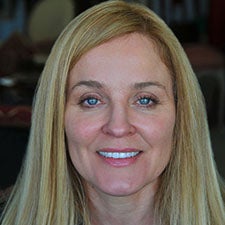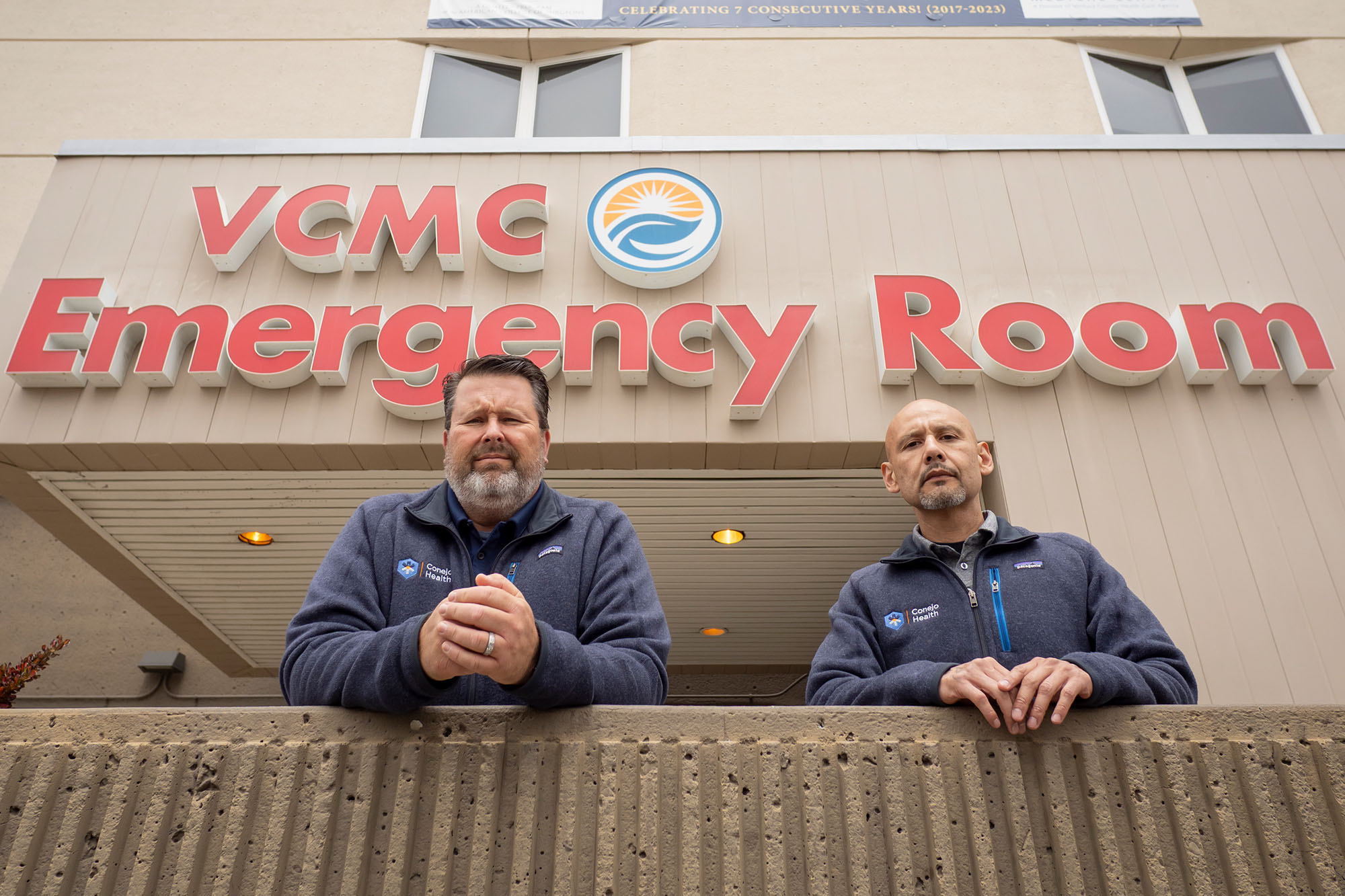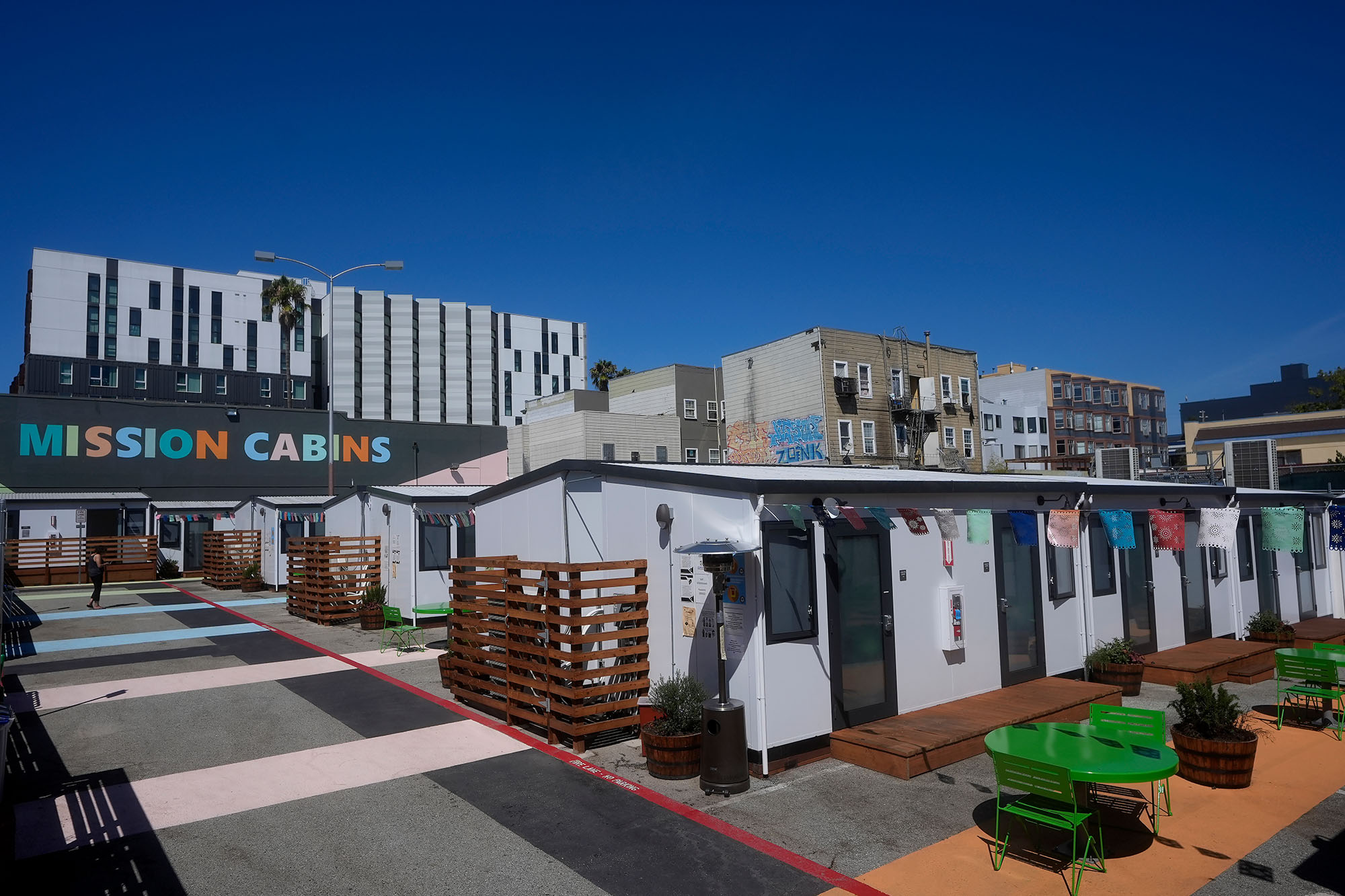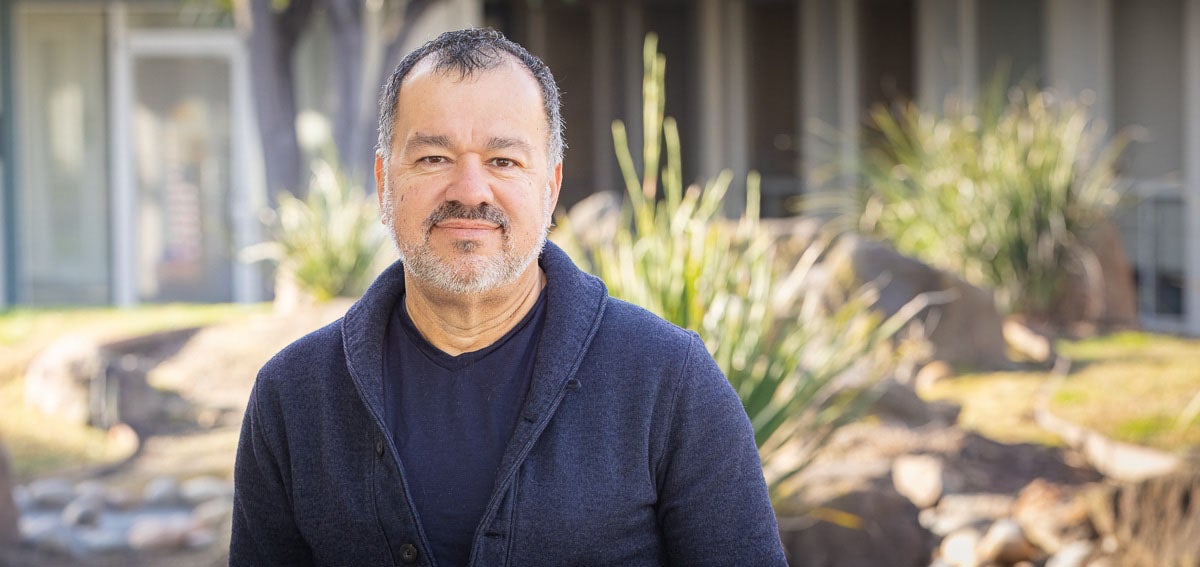
In January 2023, when Sherry had her first medical appointment at the Chinatown Service Center (CSC), a Federally Qualified Health Center in the Chinatown neighborhood of downtown Los Angeles, she hadn’t seen a doctor for years. The pandemic, a move, and her six-day-a-week job as a housekeeper made checkups, dental visits, and routine gynecological exams too difficult for the 32-year-old. But there was also something else.
“I had been sort of spiraling down into depression,” said Sherry, whose last name is being withheld to protect her privacy. “I came here for a physical exam, but the truth is I was not doing well mentally.” During the visit, the physician assistant mentioned that Sherry was overdue for a Pap smear. Sherry burst into tears. “I just told her that I really couldn’t handle having that done. I was so low that day,” Sherry said. The clinicians, including her primary care doctor Michael Borookhim, MD, had recently received training on assessing primary care patients for possible behavioral health needs. When they screened her with the Patient Health Questionnaire, Sherry’s score alarmed them.
Instead of simply giving Sherry a referral for behavioral health services, the health care providers did something better. They stepped right outside the exam room to find Maya Lee, the center’s integrated service coordinator. Lee had a new position, made possible in part because CSC’s Chinatown and Alhambra locations are participating in a learning collaborative sponsored by CHCF and the Center for Care Innovations to advance behavioral health equity in primary care.
A New World
The aim of the project is to develop innovative ways to break down organizational silos that separate primary care and behavioral health services to reduce barriers for patients in need. The moment the primary care staff asked Lee to step in, Sherry said, a new world opened.
“Suddenly I had this person telling me I could get an appointment with a therapist very quickly and she was going to help me do it,” said Sherry. “Frankly, I had felt bad — at times suicidal, even — for a long time. I didn’t have anyone at all I could talk to about this. But that first day I thought, okay, there’s some hope. There’s someone out there who might be able to actually help me.”
Borookhim said the integrated service coordinator role has been an important component of the center’s quest to improve access to behavioral health services. “It’s clear to health care workers that anxiety and depression are rampant right now,” he said. “But even when people need mental health services, they may resist them or just never book the appointment if they aren’t given a helping hand. Having a coordinator shows them that someone cares about them. That’s so important.”
Lee, who had recently completed one year of medical school and decided to take a break from her program to reevaluate her future, threw herself into the job. “The doctors are booked solid — back-to-back patients,” she said. “They can’t always take that extra time with a patient. But I could answer questions and connect patients with the services they needed.”
Xuan Yu (Nick) Zhang, MS, project manager for CSC’s Behavioral Health Department, said the idea for creating the integrated service coordinator came from Gilmore Chung, MD, a doctor from Venice Family Clinic with expertise in integration of primary care and behavioral health services. As part of the project, Chung provided monthly coaching via Zoom to the CSC staff.
The potential impact of Lee’s presence on the staff was underscored when, as part of the project, Wendi Vierra, director of behavioral health operations at Neighborhood Healthcare, an FQHC, invited a CSC team to visit the organization’s Escondido location to observe how primary care and behavioral health services have been successfully merged.
“We saw that the integrated service coordinator position is really a linchpin to success,” Zhang said.
Linguistic Competence
She created a brochure for the center that explains behavioral health services in easy-to-understand terms. About 50% of CSC’s patients are Asian-American and Pacific Islanders, and a large portion of those patients spoke Mandarin, Cantonese, Fuzhounese, Suzhounese, Taishanese, or Vietnamese before they learned English. “I also made sure that patients understood that we have therapists who do therapy in a language they are comfortable speaking,” Lee said. “That can make a very big difference.”
While Sherry was amenable to receiving services right away, Zhang said that’s not always the case. Some patients can take months before they are ready. “Many of the people we see haven’t been raised in a culture where it’s acceptable to access behavioral health services,” Zhang said. Oftentimes, patients resistant to behavioral health care instead complain about a physical malady. Somehow, doctors must introduce the possibility that talk therapy or psychiatry, if medication is warranted, may help. “When patients are apprehensive, we’ve found that having that warm handoff from an integrated service coordinator — someone who bridges primary care and behavioral health — is key.”
For patients who are ready, the integrated service coordinator can help those with immediate needs, such as suicidal thoughts or worsening symptoms, get served faster. Instead of waiting weeks or months for an appointment, which can happen if a patient self-refers to behavioral health, an individual handled by the integrated service coordinator gets prioritized and can see a therapist within 10 days.
That was the case with Sherry, who had her first appointment with therapist Alvin Fong the next week. “Everyone needs someone to listen to them and validate their feelings,” said Fong. “That’s what I strive to do first and foremost.”
Sherry and her husband rent a room, so she has little privacy or quiet space because of her crowded living conditions, she said. Fong’s office has become a sanctuary. “Sometimes I come in and I just want to use a few minutes of my therapy session to meditate,” she said.
Ensuring Regular Therapy
After being introduced to Fong, Sherry committed to weekly sessions. When she mentioned that accessing transportation to her therapy appointments might be difficult, Lee informed her that her Medi-Cal managed care plan would provide Uber trips for appointments. “I couldn’t believe it,” said Sherry. “It means I never miss an appointment because getting here is so easy.”
Another recommendation from integration coach Chung included hosting monthly staff meetings, with lunch provided for harried practitioners, where everyone could discuss integration goals and practitioners could receive training on delivering assessments, properly using the integrated service coordinator, and other strategies. Now, two weeks before every meeting staff identify individual patient cases that might benefit from consultation between primary care doctors and behavioral health practitioners. The last 20 minutes or so of the meeting are used for those consultations.
“Patients benefit a lot from this team approach,” Zhang said.
With such a high level of attention, Sherry’s mental health slowly improved along with her physical care. The center coordinated her care, making sure she received that Pap smear, as well as dental care and chiropractic services for back problems. And, importantly, Fong is supporting her in figuring out what she wants to do with her life.
In her early 20s, Sherry volunteered with a children’s arts and music program, which she loved. In her mid-20s, she was hired as an apprentice at a shop in the San Fernando Valley that specialized in custom body parts for bespoke motorcycles. She became a master at laminating parts with carbon fiber, and one of the motorcycles she helped create earned a spot in the Petersen Automotive Museum in Los Angeles. Unfortunately, Sherry had to leave that job because she became sensitive to the chemicals used in the shop. Five years ago, after her boyfriend died in a motorcycle accident, Sherry became serious about art, and taught herself to paint with oil and acrylic. Talking to Fong helped her realize how much she missed it. When she began therapy, she hadn’t touched her brushes in years.
The Art of Therapy
“In therapy I started to see that maybe somehow, I could find a space to paint. Maybe I could be an artist again,” she said. Encouraged by Fong, Sherry pursued her passion. She found a tiny, affordable art space, and slowly purchased art supplies. Now, she’s back to creating.
“I never took art in high school even because I didn’t think I was any good compared to real artists,” she said. “But at some point, I realized it doesn’t matter. I paint for myself.”
In fact, Fong reinforced this mindset by teaching Sherry a maxim she now treasures: comparison is the thief of joy.
Sherry titled her most meaningful painting “Forged from Nightmares,” a nod to how she now sees the artwork as a reflection of her life: her childhood was chaotic and violent, largely because of an abusive parent. “I see now, though, that the life I create out of all of this can still be beautiful,” Sherry said.
And on a scale of 1 to 10, how is she doing now? “Well, when I first came here, I was in the negative numbers,” she said. “Now I’d say I’m about an eight. There’s still room for improvement, but I’m doing a lot better.”
Integration Takeaways from Chinatown Service Center
CSC’s Chinatown and Alhambra (San Gabriel Valley) locations were recipients of CHCF grant for the Center for Care Innovation’s Advancing Behavioral Health Equity in Primary Care Learning Collaborate project. Xuan Yu (Nick) Zhang, project manager for CSC’s Behavioral Health Department, said the most recent assessments have staff feeling confident that the center is well on its way to successfully integrating primary care and behavioral health.
During the project, CSC realized a 50% increase in annual referrals from the medical department to the behavioral health department. Primary care doctors now successfully complete a depression screening during 90% of visits (up from 74%). More of the center’s primary care patients who desperately need behavioral health services are getting them. Zhang underscored the following elements, supported by participation in the project, as having helped Chinatown achieve its goals:
- Creation of an integrated service coordinator position.
- Ongoing staff coaching. Monthly meetings via Zoom with an expert adviser helped staff identify obstacles and find solutions.
- Staff toured a facility with extensive experience running a successful integrated service program. That was invaluable, Zhang said.
- Fostering integrated communication. The grant pushed the center to create lunchtime meetings where doctors, therapists, and other staff discussed integration goals and brushed up on assessment training. They also reserved time afterward to discuss individual patient cases as a care team.
- Appropriate marketing. Some cultures are less knowledgeable about or comfortable with behavioral health. The center developed simple patient brochures with easy-to-understand, basic information about behavioral health. These marketing materials also made clear that therapists could deliver services in many languages other than English.
—Victoria Clayton
Authors & Contributors

Victoria Clayton
Victoria Clayton is a journalist and creative writer in Southern California. Her work has appeared in The Guardian US, The Atlantic, the Washington Post, Open Mind, and many other publications. She writes on a range of topics, including health, well-being, and family.
Clayton is a member of the American Society of Journalists and Authors.

Harrison Hill
Harrison Hill is a documentary photographer and filmmaker based in Los Angeles, California. His work focuses on social justice issues centered around communities of color in the US.





